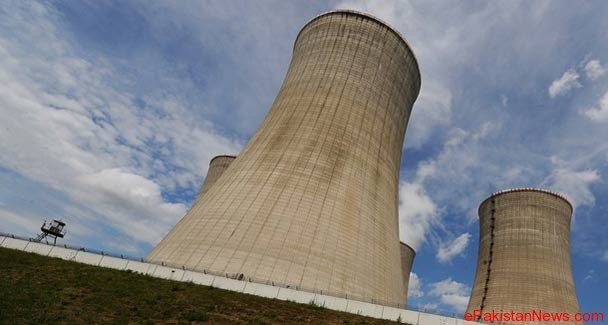The Defense and Energy departments are working under a government-to-government agreement signed Jan. 19 with China to establish a regional center of excellence there for nuclear security, a Pentagon official said.
Rebecca K.C. Hersman, deputy assistant secretary of defense for countering weapons of mass destruction, told American Forces Press Service the effort will allow the agencies to leverage their expertise and resources for “maximum effect to President Barack Obama’s nuclear security agenda.”
In April 2009, from Hradcany Square in Prague in the Czech Republic, Obama called for reducing the number of nuclear weapons in the world and building a new framework for civil nuclear cooperation. A year later at the Nuclear Security Summit here, the United States and China agreed to strengthen cooperation in nuclear nonproliferation, nuclear security and the fight against nuclear terrorism.
Also at the summit, Chinese President Hu Jintao committed to building the Center of Excellence on Nuclear Security outside Beijing.
According to an Energy Department fact sheet, the agreement paves the way for its National Nuclear Security Administration and the Defense Department to work with Atomic Energy Authority representatives in China to create a central site for training in all aspects of nuclear security.
“In many ways, DOD is the supporting player here to the broader DOE objectives,” Hersman said, “but DOD brings strengths to table, particularly in … site security, transportation security, incident response [and] inventory management, as well as experience in developing and providing training and curricula for nuclear security.”
DOD and DOE have worked together in the past, she noted. “These are all things we have done on multiple occasions directly and in support of DOE,” Hersman said, “so we see this as a natural fit for the [Center of Excellence] effort, which is expected to incorporate all these elements.”
The center will serve as a forum for exchanging technical information, sharing best practices, developing training courses and promoting technical collaborations to enhance nuclear security in China and throughout Asia.
The two-story center will be financed through a U.S.-China cost-sharing arrangement and is expected to be complete by 2012, said Dave Huizenga, principal deputy assistant administrator for the office of defense nuclear nonproliferation in the Energy Department’s National Nuclear Security Administration.
“This cooperation is largely with the nonweapons side — the Chinese Atomic Energy Authority, which runs their civilian research facilities and has a role in their nuclear power facilities,” Huizenga said. “But the hope is that if we share best practices and this information gets to [the nonweapons] part of the Chinese nuclear sector, the defense people will benefit from it indirectly.”
The National Nuclear Security Administration has had an ongoing partnership with the Chinese since 2005, Huizenga said.
“We’ve had a robust best-practices sharing exchange of information on physical protection and guard forces and materials control and accounting — all the things you do to make sure that nuclear materials stay in the facility where they’re supposed to be and aren’t moved off illicitly,” he said.
The agreement has taken such cooperation to a new level, he added.
“We’ve had a small facility where we’ve been doing this training since 2005,” Huizenga said. “But we want to consolidate everything into one larger mock-up training center so we can bring Chinese and others in the region into a state-of-the-art facility where they can get hands-on experience understanding what a guard would do if an alarm went off on the fence on the perimeter of a nuclear materials storage site, for instance.”
The center, Hersman added, also likely will offer the following:
- Training nuclear site personnel to measure and account for nuclear material and to design and install nuclear material security systems;
- Training protective force personnel using scenario-driven threat-response exercises;
- Training personnel on international nuclear safeguards requirements and inspection techniques; and
- Environmental testing of nuclear security system components.
According to a White House fact sheet, the U.S. and Chinese governments have cooperated since April 2004 to enhance nuclear security under the Peaceful Uses of Nuclear Technology Agreement.
In 2005, the U.S. and China sponsored a joint technology demonstration at the China Institute of Atomic Energy outside Beijing that featured established nuclear security and international safeguards technologies and illustrated nuclear security best practices.
Since 2005, experts from the United States and China have conducted more than 15 workshops on nuclear security issues and activities.
“China has always described the center as supporting regional and International Atomic Energy Agency nuclear security cooperation,” Hersman said, “and we strongly support that goal.”










